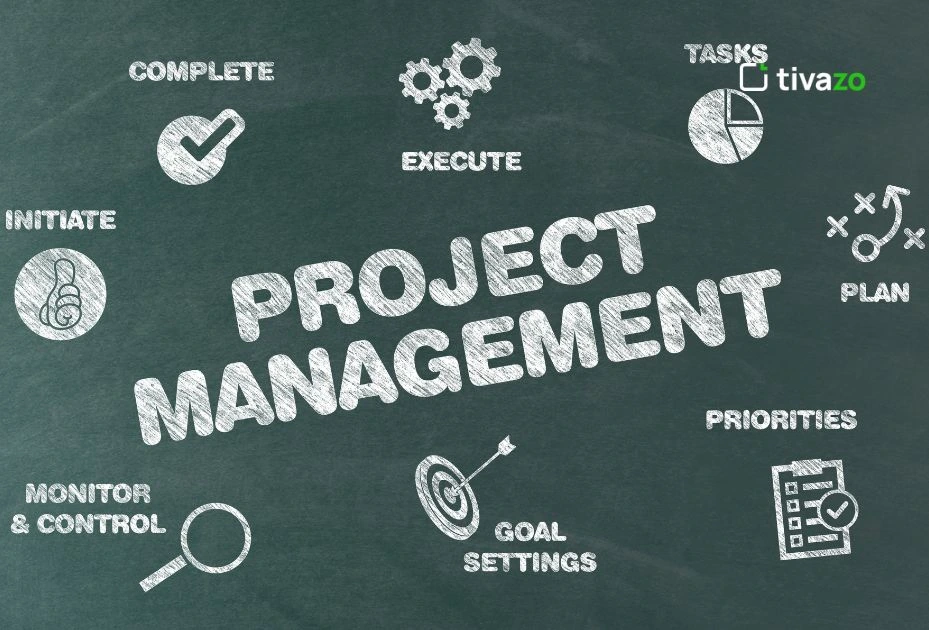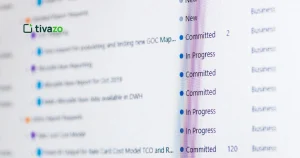Managing projects means facing unpredictable situations all along the way. Unexpected budget problems and a lack of resources are examples of project risk that can stop even the best-planned projects in their tracks. How ready and responsive teams are to challenges usually decides whether a project is successful or not.
This is when it’s especially important to use risk response strategies in project management. They help you handle risks in advance so that they do not affect your project’s objectives. Applying suitable risk strategies in project management allows managers to manage possible risks and work with a greater chance of project success.
Knowing and using these methods is key for any project professional to continue achieving the same results and earn ongoing trust from stakeholders.
What Do Risk Response Strategies Mean in Project Management?
They are designed as systematic approaches to combat risks that may influence a project’s outcome. The standards are based on Project Management Institute (PMI) approaches and are important elements in the Project Management Professional (PMP) style.
A detailed risk response plan sets out particular steps, jobs, and deadlines for dealing with every risk found. By including the risk management plan in the main project management plan, we can keep our risk-handling approach from being passive.

According to the framework, a manager deals with both threats (negative risks) and opportunities (positive risks) separately. We need to put effort into limiting negative risks, but we should also consider how we can achieve the best outcomes from opportunities. Managers choose a risk response strategy in project management to fit the needs of the project and select it by considering how likely the risk is, the effect it could have, and what resources are available.
Risk response strategies in project management support the team in managing risks so they can control and manage the outcomes of the project even when dealing with uncertainties from the outside world.
The primary methods we use to respond to risks
Risk Avoidance
To avoid risk, the project approach, scope, or methodology can be altered entirely. The strategy works to eliminate the situation that leads to the risk.
If using an outdated platform exposes a project to the risk of technology obsolescence, the team might select one that is fully supported and modern. In the same way, when bad weather endangers outdoor building jobs, the team could change the design to include interior work.
Taking no action is best when the trouble likely to be caused is major and the likelihood is also very high, mainly when the risk compromises the main project goals. Yet, implementing this strategy usually means adjusting the project plan and deciding on how time and money will be divided.
Risk Mitigation
Risk mitigation seeks to either decrease the chances of a risk happening or the seriousness of the consequences. Using this approach in project management is popular since it lets projects go on while keeping risks under control.

Some mitigation strategies are to use extra quality measures, conduct testing more regularly, and install backups. For instance, the risk of key staff leaving the project can be reduced by training different team members on important duties and keeping detailed reports of all processes.
It’s most effective when risks are present but can be partially controlled by being proactive. Risk mitigation needs constant supervision and extra investment, but it tends to offer the best mix between reducing risk and running a successful project.
Risk Transfer
When you transfer a risk, you let another party take care of it since they are better placed to handle it. The technique helps transfer some of the risks from the project to someone else.
Companies usually do this by buying insurance, outsourcing high-risk tasks to experts, or ensuring penalties are included in their contracts. Those who receive risk usually manage it better since they are skilled, well-equipped, or willing to take on that particular kind of risk.
If a risk doesn’t fit with the team’s main skills or calls for skilled people, transferring the risk can be very effective. Still, it’s worth mentioning that certain risks cannot be mitigated 100%, and a third party might gain from the upside of risks.
Risk Acceptance
Risk acceptance means accepting that a risk exists and continuing without doing anything to remove it. People choose this method when responding would cost more than the harm it could prevent, and when other options are unavailable.
You can either actively or passively accept risk when trading. Companies that practice active acceptance take extra precautions to respond if risk events arise. Passive acceptance is defined simply as acknowledging the risk.
Accepting risks is appropriate when the probability is low and the impact is minor or when the organization’s willingness to accept risks covers the consequences. With this strategy, decisions about stakeholder expectations and clear discussions of accepted risks and their impact on the project must be made.
Risk Exploitation
Risk exploitation means taking opportunities or positive risks to help achieve the project’s objectives. It means taking steps to increase the chance that positive events will occur.
If the opportunity for faster project completion is presented by market conditions, the team may add extra help or schedule changes. The aim is to keep the project from missing important opportunities and to make the most of what is good for it.
Opportunities need to be noticed in advance and unlocked as soon as possible when the time is right. This strategy proves that taking care of risks involves defending the business and profiting from good events.
How to Pick the Right Way to Respond to Risks
- Choosing the best way to handle risks in project management depends on studying the nature of the risk, the environment within the organization, and the resources available. Before making a decision, managers should take into account the organization’s level of risk tolerance, which describes reasonable levels of uncertainty and impact.
- Before selecting a strategy, the project management plan gives context by covering issues such as the budget, deadlines, and what stakeholders desire. Risk registers allow you to arrange your responses based on risks’ chances, the effects they could cause, and how much they are connected.
- Deciding on a strategy takes into account the results of a cost-benefit analysis. How much you spend on risk response should match the likelihood and seriousness of the risk. Risks that are likely to occur and bring high consequences usually call for big investments in risk management, but risks with little impact could be tolerated without extra planning.
- It is important to get stakeholder input, as each strategy has the potential to affect everyone differently. Approaches in strategy can lead to new costs being shifted to people outside the organization, or they can call for the redistribution of existing resources inside. Chosen risk response methods in a project should suit both the main objectives and the abilities of the project, and those implementing them should keep stakeholders on board.
Examples of Risk Response Strategies Used in Project Management

- A software development project may experience a risk when a central developer is unavailable during crucial periods. They stopped risks by cross-training team members and making sure that all their documents were detailed. As a result, risks were managed so the project was able to progress smoothly.
- Delays from weather posed a big problem for meeting project deadlines on construction projects. Team members selected both transferring and managing risks. The risks from weather were transferred to special insurance, and they also minimized the impact by having flexible schedules and providing covered areas to work.
- All of these situations confirm that collaboration among project managers, the team, and stakeholders is key to good risk response planning. To succeed, you must ensure communications are clear, resources are appropriately spread, and project risk is regularly studied over the entire project period.
Conclusion
Successful projects in today’s busy business world require strong risk response skills. Using the five core methods – avoidance, mitigation, transfer, acceptance, and exploitation – covers all aspects of handling both challenges and opportunities during the entire project.
To implement well, you need to use a plan that reflects the risks, your organization’s situation, and what your stakeholders want. An effective risk response plan based on these strategies allows project managers to preserve control over the project’s outcome and improve the outcomes even more.
Making sure that risk is addressed properly during a project leads to improved chances of success, greater familiarity with the timeline, and happier stakeholders. Now is the time to prepare for risks, turning potential problems for your project into gains for your company.




